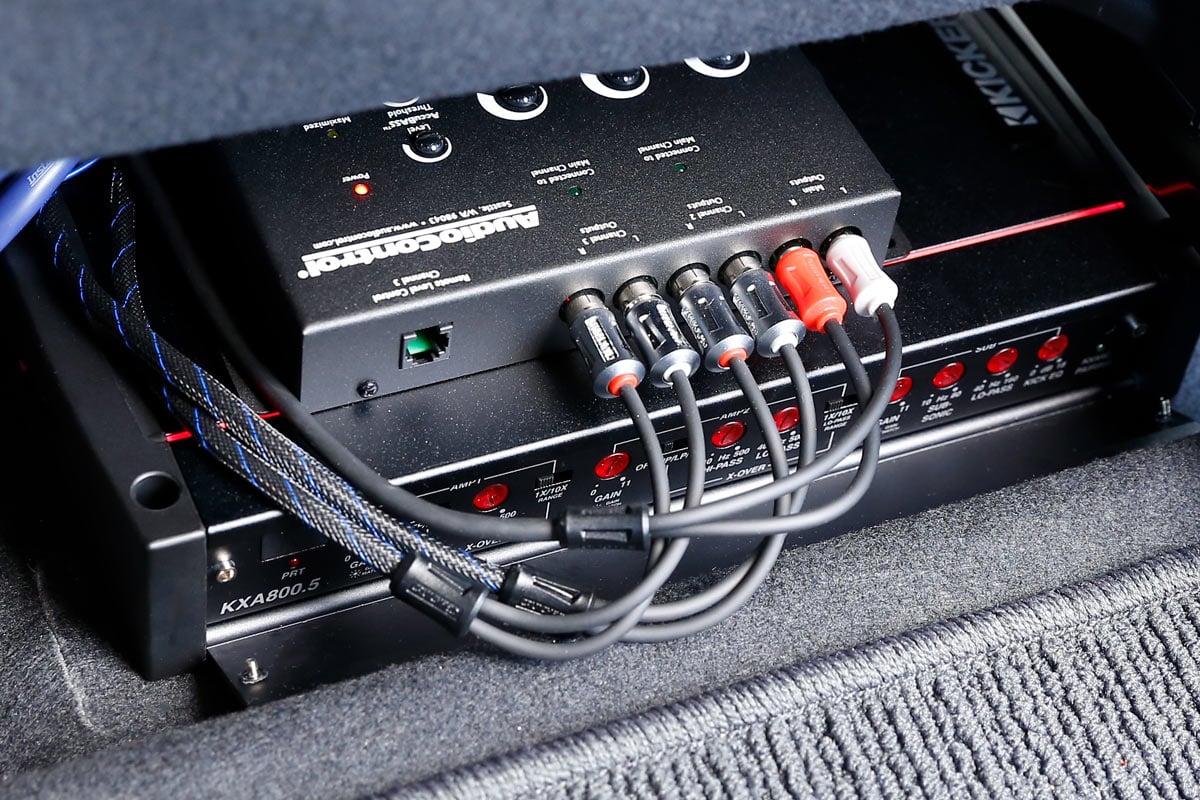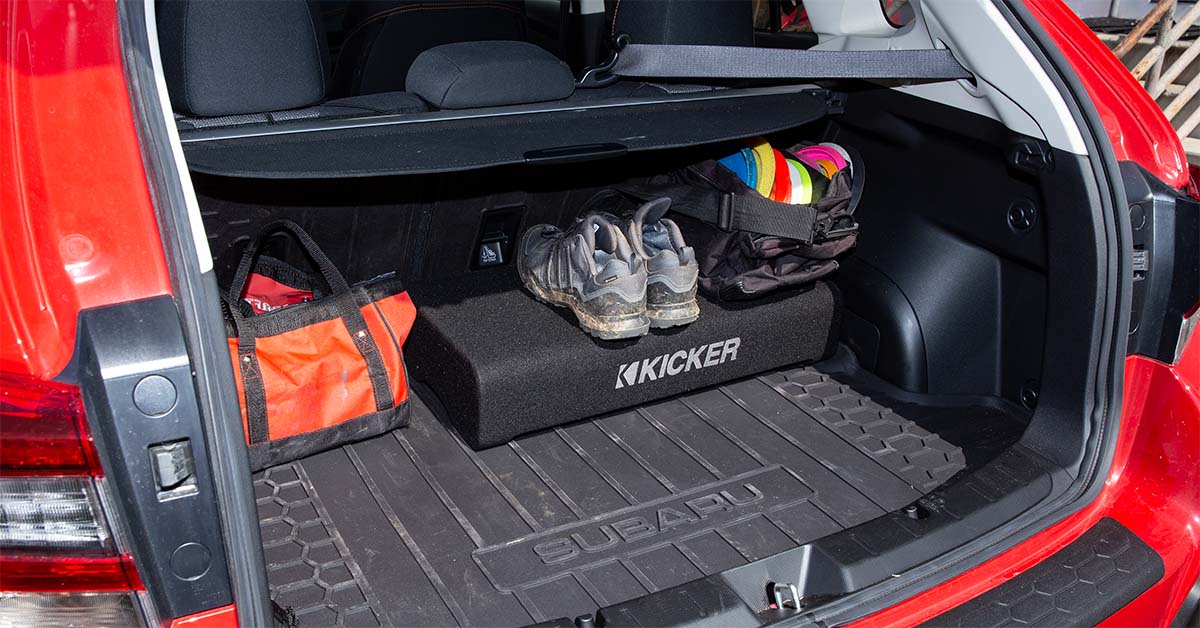We tested and researched affordable 4-channel amplifiers that give you install-friendly size, reliable performance and sensible power without breaking the bank. Below are six solid picks (all plausibly under $200), each with specs, real-use notes, pros & cons and a clear buying tip.
Affiliate Disclosure: AmplifierZone is reader-supported. As an Amazon Associate, we may earn commissions from qualifying purchases at no extra cost to you.

Comparison at a glance
| Model | Power (RMS / Ch) | Bridgable | Key Features | Price Range |
|---|---|---|---|---|
| BOSS PF1800 | 50W x4 @4Ω / 100W x4 @2Ω | No | Class A/B, low profile | Budget |
| Alpine S-A32F | 35W x4 @4Ω / 70W x4 @2Ω | No | Class D, efficient, compact | Under $200 |
| Jensen 4-Channel | 45W x4 @4Ω | No | Compact, low heat | Budget |
| Pioneer GM-A6704 | 50W x4 @4Ω / 75W x4 @2Ω | Yes | Bridgeable channels, trusted build | Under $200 (sales) |
| Stinger MT-600.4 | 60W x4 @4Ω | No | Compact, clean front panel | Under $200 |
| Taramps TS 1200×4 | 300W x4 @4Ω (manufacturer rated) | Yes | High efficiency, durable build | Budget / value |
1. BOSS Audio PF1800 4-Channel Car Amplifier
- Topology: Class A/B
- Power: ~50W x4 @4Ω (consumer ratings vary)
- Inputs: RCA
- Dimensions: low-profile chassis for under-seat installs
The BOSS PF1800 is a classic budget workhorse — simple, easy to wire, and built for drivers who want louder factory speaker systems without complex tuning. The PF1800’s Class A/B design is forgiving on tone and is usually priced very attractively; it’s a straightforward fit for door-speaker upgrades and adding a small sub on a bridged channel (if the model supports bridged mode).
Installation is simple — the amp’s compact low-profile chassis fits under seats or behind side panels. The onboard level/gain controls are basic, so spend the time to set proper gain and filtering to avoid clipping. As with most budget Class A/B amps, heat management is a consideration, so keep it ventilated.
In real use this amp is best for entry-level upgrades where cost matters more than audiophile performance. If you want reliable power to improve factory speakers and occasional sub use, it gets the job done for the money.
- Very affordable
- Easy to install low-profile chassis
- Reasonable power for door + small sub
- Not the cleanest power at high gain
- Runs warm in tight spaces
- Limited feature set (no advanced filters)
2. Alpine S-A32F 4-Channel Digital Amplifier
- Topology: Class D (digital)
- Power: ~35W x4 @4Ω (industry-typical conservative rating)
- Inputs: RCA, compact footprint
- Features: High efficiency, low heat
The Alpine S-A32F pairs Alpine reliability with a compact Class D platform suited for mobile installs where heat and space are concerns. Class D efficiency keeps the amp cool and draws less current — a big plus for tight installs or older vehicles where alternator capacity is limited.
Sound-wise, Alpine focuses on clean, controlled output rather than a “boomy” bass signature. That means it pairs especially well with good door speakers and component sets, delivering improved clarity and headroom over typical factory amplifiers.
If you want a compact amp that won’t heat up your trunk or stress your electrical system, the Alpine S-A32F is one of the safest picks under $200 — particularly for multi-speaker setups in sedans and small SUVs.
- Very efficient; low heat
- Alpine build quality and tuning
- Compact for tight installs
- Lower RMS per channel compared with larger amps
- Fewer advanced tuning features on budget model
3. Jensen 4-Channel Class-D Compact Amplifier
- Topology: Class D
- Power: ~45W x4 @4Ω (model dependent)
- Design: Ultra-compact, under-seat friendly
- Inputs: RCA
Jensen’s compact Class-D 4-channel amp squeezes decent clean output into a very small footprint. That makes it ideal for cars where trunk space is limited or where you want the amp tucked under a seat. The design keeps heat low and the unit typically installs quickly with minimal wiring headache.
Sonically, Jensen aims for neutral performance — a reliable partner for upgrading factory speakers without altering tonal balance. It’s a sensible pick for daily drivers where space and invisibility are priorities.
Expect simpler controls and a plug-and-play approach; advanced tuners might crave more filter control, but for most installs this offers excellent value and straightforward performance.
- Tiny footprint — excellent for stealth installs
- Low heat thanks to Class D topology
- Good value for speaker upgrades
- Limited filtering/advanced features
- Power ratings vary by measurement, check specs for your use case
4. Pioneer GM-A6704 4-Channel Bridgeable Amplifier
- Topology: Class D
- Power: ~50W x4 @4Ω / ~75W x4 @2Ω (bridgable)
- Feature: Bridgeable channels for small sub or higher-power stereo
- Inputs: RCA, compact chassis
Pioneer’s GM-A6704 is a favorite because it balances trusted OEM-style reliability with useful features like bridging and compactness. Bridge the channels when you need to push a small sub or use two channels for a higher-powered pair of speakers. For multi-speaker systems, it also gives an easy upgrade path without adding a separate monoblock.
In installation, keep an eye on wiring gauge and grounding — this amp performs very well when paired with clean power and tuned gain settings. The build quality and brand support make it a safe choice for long-term installs.
For users who want flexibility (doors + small sub, or full 4-channel speaker upgrade), the GM-A6704 is an excellent mid-tier budget pick when you catch it on sale under $200.
- Bridgeable channels — flexible configuration
- Trusted brand reliability
- Good power-to-size ratio
- May run hot when bridged at high volume
- Requires careful gain setting for clean sound
5. Stinger MT-600.4 4-Channel Car Amplifier
- Topology: Class D
- Power: ~60W x4 @4Ω (manufacturer-dependent)
- Design: Clean front panel, modern styling
- Inputs: RCA
Stinger offers surprisingly good component fit and finish for the price band. The MT-600.4 is oriented toward installs that need a clean-looking amp with decent headroom. It tends to be a little more refined in the midrange than generic budget models.
Practical install notes: the Stinger typically ships with a compact chassis and a sensible terminal layout, which speeds up wiring and reduces install errors. Thermal performance is better than older Class A/B budget amps thanks to digital efficiency.
For buyers who want a nicer-looking amp with good everyday performance and easier wiring ergonomics, the MT-600.4 is a smart pick under the $200 ceiling.
- Good build and terminal layout
- Cleaner sound for the class
- Compact chassis for under-seat installs
- Power specs sometimes conservative
- May be pricier than generic no-name amps
6. Taramps TS 1200×4 4-Channel Amplifier
- Topology: High-efficiency Class D (Taramps style)
- Power: Manufacturer-rated high output (check channel/bridge mode)
- Feature: Designed for higher power per dollar, industrial build
Taramps are known for delivering high power for low cost — these amps come from a different design philosophy (performance-first). The TS 1200×4 is more of a value/power specialist: if you need larger sustained output and don’t care about the last bit of low-level refinement, it offers an excellent watt-per-dollar ratio.
That said, Taramps can be more sensitive to wiring and require good electrical support — heavy gauge power and solid grounding is a must. If you use this amp in a properly prepared system, it will outperform many more expensive competitors in sheer output.
If your build leans toward power-first setups, check our Skar Audio RP-1500.1D review to see how a mono amp can complement this setup.
Choose the Taramps if your priority is raw power and value, and you or your installer are comfortable with the extra electrical work that sometimes accompanies higher-output budget amps.
- Outstanding watt-per-dollar for aggressive builds
- Good for high-output multi-channel setups
- Requires robust wiring & electrical prep
- Less refined tonal character vs. consumer brands
Buying guide — what matters when choosing a 4-channel amp under $200

Power ratings: Check RMS power at 4Ω and 2Ω. If bridging for a sub, verify bridged power. Learn how to interpret ratings in our amplifier wattage guide.
Thermal & space: Class D runs cooler — ideal for tight installs. Avoid burying amps under carpet or foam padding.
Wiring: Use proper gauge wire and clean grounds. For wiring reference, see Crutchfield’s amplifier install guide.
Final verdict
All six amps here shine in different ways: budget shoppers will love BOSS and Jensen; installers after efficiency should go for the Alpine S-A32F. The Pioneer GM-A6704 remains the best all-rounder thanks to its bridgeable design. For style, pick the Stinger, and for raw power, the Taramps. You can also explore our Best Car Amplifiers for Bass 2025 list for dedicated low-end builds.
Amazon Affiliate Disclosure: As an Amazon Associate, AmplifierZone earns from qualifying purchases. We only recommend products we’ve vetted for performance and reliability.
FAQs
- Can I bridge a 4-channel amp to power a sub?
- Yes, many 4-channel amps can be bridged to run a subwoofer. Always check impedance ratings and wiring diagrams in your manual.
- Do I need a new alternator?
- Generally no, these budget amps draw modest current. Ensure good wiring and grounding first.
- Are Class D amps better for under-seat installs?
- Yes — they run cooler and more efficiently, perfect for stealth or tight-space mounting.
